Reduce energy costs while enhancing your home’s comfort and appearance
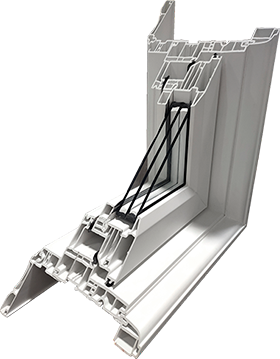

Struggling with high heating and cooling bills?
Uncomfortable indoor temperatures year-round?
Furniture and flooring fading from UV exposure?
Condensation forming on your window panes?
Our premium Low-E windows address all these issues with an all-in-one solution that improves comfort, reduces energy loss, and protects your home’s interior.


Enbridge Gas and Save on Energy offer window rebates to help Ontarians improve home energy efficiency and comfort.
Low-E (low emissivity) windows are specially designed glass units that minimize the amount of infrared and ultraviolet light passing through your windows without reducing visible light. These technologically advanced windows feature an extremely thin, virtually invisible metallic coating that reflects heat while allowing natural light to enter your home. This coating’s low-E glass selectively reflects infrared and UV rays, enhancing energy efficiency.
Low-E windows utilize specialized coatings thinner than a human hair applied to the glass surface. In the pyrolytic process, the coating fuses to the hot glass surface during production, ensuring a strong bond that enhances the durability of the glass for further processing. These microscopic layers create a selective barrier that reflects long-wave infrared energy (heat) while allowing short-wave energy (visible light) to pass through. This unique property helps keep your home warmer in winter by reflecting indoor heat inside and cooler in summer by reflecting solar heat away from your home.

Low-E glass, or low-emissivity glass, is a marvel of modern window technology designed to enhance energy efficiency and comfort in your home. This type of glass features a microscopically thin, transparent coating that reflects long-wave infrared energy, or heat, while allowing visible light to pass through. Imagine a coating 500 times thinner than a human hair yet powerful enough to significantly reduce heat transfer through the glass.
The magic happens during sputtering, where ions bombard the glass surface to create a thin metal oxide layer. This low-E coating is then sealed within an insulated glass unit (IGU), forming what we know as a low-E window. The result is a window that acts like a thermal mirror, reflecting radiant heat into your home during winter and keeping it out during summer.
The solar energy spectrum includes ultraviolet (UV) light, visible light, and infrared light, each occupying different parts based on its wavelengths. Low-E coatings are designed to minimize the amount of UV and IR light that can pass through the glass without compromising the amount of visible light transmitted. This means you get the natural light you love without the unwanted heat and UV rays.
There are two primary types of Low-E glass available:
Passive low-e coatings are a type of low-e coating that maximizes solar heat gain when applied to specific insulating glass units (IGUs) surfaces, particularly the third or fourth surfaces. These coatings facilitate passive heating in buildings, reducing reliance on artificial heating.
Our selection includes premium options like Cardinal 366 Low-E glass, known for its exceptional balance of solar control and high natural light transmission.
Low-E windows dramatically reduce heat transfer through your windows, decreasing your home’s energy consumption by up to 30-50%. During winter, they reflect indoor heat into your home, while in summer, they reflect the sun’s heat away. This dual action significantly lowers both heating and cooling costs throughout the year. With rising energy costs in the GTA, the investment in Low-E windows typically pays for itself within 3-7 years through reduced energy bills.
Low-E windows eliminate cold spots near windows and stabilize indoor temperatures throughout your home. By reducing heat loss in winter and heat gain in summer, these windows maintain consistent interior temperatures, eliminating those uncomfortable drafty areas and hot spots. This improved thermal performance means your heating and air conditioning systems work less, creating a more comfortable living environment while extending the life of your HVAC equipment.
The Low-E coating blocks up to 95% of harmful ultraviolet rays without sacrificing natural light. This protection significantly reduces fading and damage to furniture, flooring, artwork, and other interior items. Unlike tinted glass that darkens your interior, Low-E windows maintain high visible light transmittance while providing superior UV protection. This means your home stays bright and cheerful while your valuable possessions remain protected from sun damage.
Low-E windows maintain warmer interior glass surface temperatures, significantly reducing condensation that can lead to mold growth and window damage. The improved thermal performance keeps the glass surface temperature closer to room temperature, preventing moisture buildup even during extreme Canadian winters. This means clearer views, less maintenance, and a healthier indoor environment without the need for constant wiping and cleaning of foggy windows.
Low-E technology significantly enhances the performance of various window configurations:
| Feature | Single Pane with Low-E | Double-Pane with Low-E | Triple Pane with Low-E |
| Energy Efficiency (U-Value) | 0.84-0.87 | 0.24-0.30 | 0.15-0.18 |
| Solar Heat Gain Coefficient | 0.63-0.73 | 0.27-0.36 | 0.24-0.28 |
| Visible Light Transmittance | 70-75% | 65-70% | 60-65% |
| Noise Reduction | Minimal | Good | Excellent |
| Insulation Value | Low | High | Very High |
| Condensation Resistance | Poor | Good | Excellent |
| Cost Range | $ | $$ | $$$ |
| Typical Lifespan | 10-15 years | 20-25 years | 25-30+ years |
| ROI Potential | Low | High | Highest |
| Best For | Budget constraints | Balance of performance and value | Maximum efficiency and comfort |
While Low-E windows require a higher initial investment than standard windows, their energy savings typically offset this cost within 3-7 years. Our clients report average energy savings of 25-40% on heating and cooling costs after installation, making Low-E windows one of the most cost-effective home improvements for energy efficiency in the GTA climate.
| Window Type | Size Range | Cost Range (Including Installation) |
| Double Pane Casement with Low-E | 24" x 36" to 36" x 60" | $650 - $950 |
| Double Pane Slider with Low-E | 36" x 24" to 72" x 48" | $550 - $850 |
| Triple Pane Casement with Low-E | 24" x 36" to 36" x 60" | $850 - $1,250 |
| Triple Pane Picture with Low-E | 36" x 36" to 72" x 60" | $750 - $1,150 |
| Bay/Bow Windows with Low-E | Custom | $2,800 - $5,000+ |
All our window styles come with Low-E glass options, ensuring you never have to compromise efficiency for design.
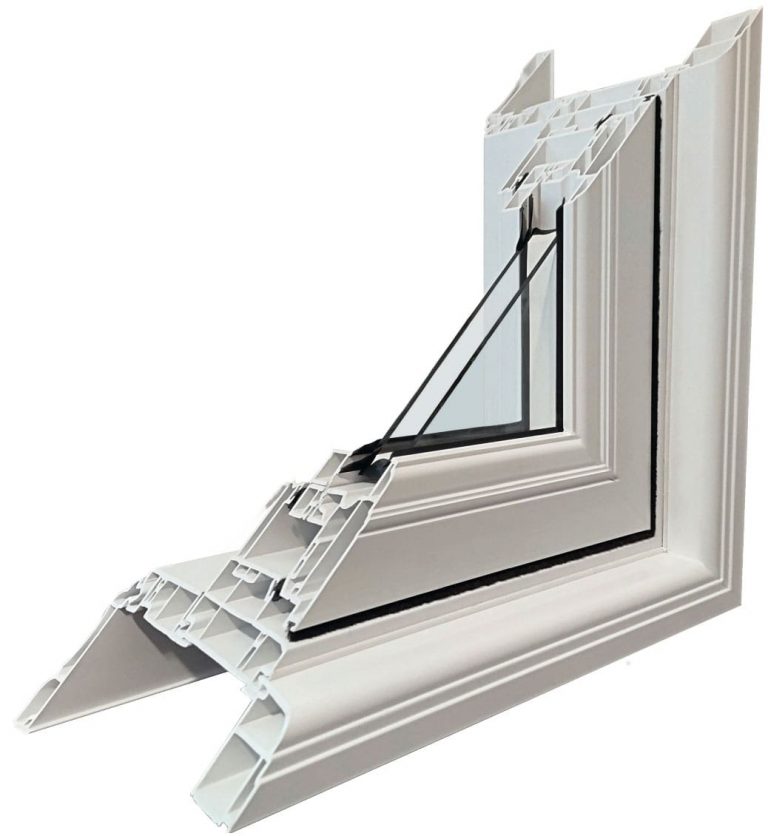
Our premium uPVC vinyl frames offer superior insulation properties that perfectly complement Low-E glass. Maintenance-free and highly durable, these frames won’t chip, crack, warp, rot, or corrode under normal conditions. Our Modern Slim Flat Profile design provides maximum glass area while maintaining structural integrity.
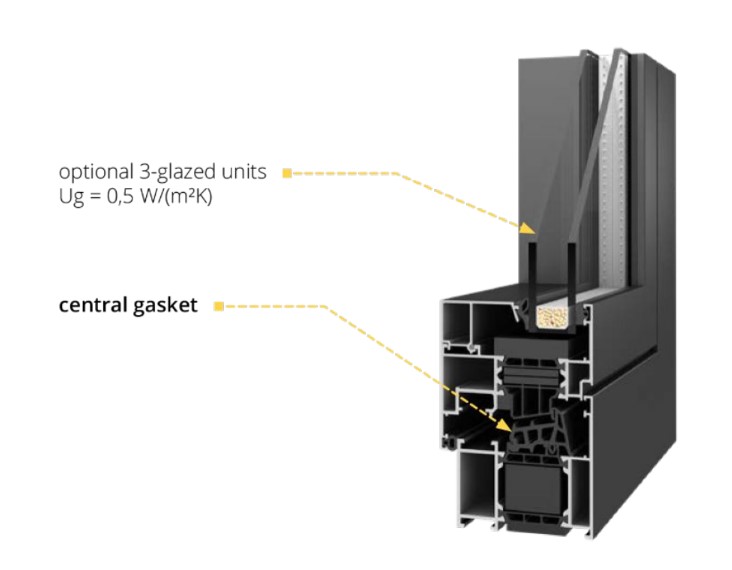
Our thermally broken aluminum frames provide strength and durability while maintaining excellent energy efficiency for a sleek, contemporary look. Ideal for large openings and architectural designs, these frames offer narrow sightlines and maximum glass area, perfect for modern Toronto homes seeking a minimalist aesthetic.

Total Home Windows and Doors is a leading manufacturer in the Greater Toronto Area with over 14 years of experience and 28,000 satisfied customers. Our company, founded by Vitaliy Shapiro and Anna Klein, combines engineering expertise with innovative design to deliver high-quality, durable window solutions at fair prices.
Our state-of-the-art manufacturing facility produces 17,000 windows annually, utilizing advanced technologies and efficient processes. In 2025, we introduced our innovative Slim Flat Profile 2.78 window design, featuring a half-inch slimmer profile on each side for a sleek, modern aesthetic that maximizes glass area and energy efficiency.
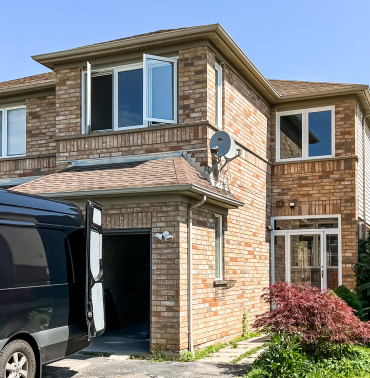


Our experienced consultants visit your home to help you select the ideal energy-efficient windows, considering installation methods, room size, and opening mechanisms.
Our trained professionals take exact measurements to ensure a perfect fit, which are then uploaded to specialized software for manufacturing.
Your order is produced using our state-of-the-art automated manufacturing system with minimal human intervention, ensuring precision and quality.
Our skilled team completes the installation in 1-3 days, removing old windows and thoroughly cleaning up, leaving your home spotless.
The process typically takes 4-6 weeks from consultation to installation, with rush orders available for completion in as little as 1-2 weeks for smaller projects.
Total Home Windows and Doors provides a comprehensive warranty package that demonstrates our confidence in our Low-E windows:
Our warranty is transferable to subsequent homeowners, adding value to your property investment. We maintain a dedicated service team equipped with specialized tools and branded service vans to address any concerns promptly.
Contact us today for a free, no-obligation consultation and quote. Our expert team will help you select the perfect Low-E windows to enhance your home’s comfort, appearance, and energy efficiency.
Need help?
The primary downside of Low-E glass is the higher initial cost compared to standard glass. Some types may reduce visible light transmission. In rare cases, the reflective properties can cause increased glare on neighboring properties or even concentrate sunlight enough to damage vinyl siding or artificial turf on adjacent buildings.
This isn’t an either/or choice—Low-E is a coating that can be applied to any glass configuration, while double-pane refers to the window construction. The best energy performance comes from combining both: double-pane windows with Low-E coating on one or more surfaces and argon gas filling between the panes.
In the Greater Toronto Area, double-pane windows with Low-E coating typically cost $550-$950 per window installed, depending on size and style. Triple-pane Low-E windows range from $750-$1,250 installed. While this represents a 10-15% premium over standard glass, the energy savings typically offset the additional cost within 3-7 years.
Yes, absolutely. Low-E glass is designed to be virtually invisible to the human eye and has excellent clarity. The coating is microscopically thin—about 1/10,000th the thickness of a human hair—allowing 70-80% of visible light to pass through while still blocking infrared and ultraviolet radiation.
Low-E glass is worth the extra cost for most Canadian homes. The 10-15% price premium delivers year-round energy savings of 25-40%, improved comfort, reduced fading of interior furnishings, and decreased condensation. The investment typically pays for itself within 3-7 years through lower energy bills.
While aftermarket Low-E films are available, they don’t perform as well as factory-applied coatings and may void existing window warranties. For optimal performance, it is recommended that windows be replaced with factory-coated Low-E glass. The precise application environment during manufacturing creates a more durable and practical coating.
Properly manufactured Low-E glass typically lasts the entire lifetime of the window unit, which is 20- 30+ years. The coating is permanently bonded to the glass and sealed within the insulated glass unit, protecting it from degradation. Our 20-year glass warranty reflects our confidence in the longevity of our Low-E products.
Low-E coatings reduce heat loss by reflecting long-wave infrared energy (heat) to its source. In winter, indoor heat reflects into your home rather than escaping through the windows. The coating acts like a thermal mirror, significantly improving insulation values and reducing heating costs during cold GTA winters.
Hard coat (pyrolytic) Low-E is applied during glass manufacturing at high temperatures directly on the float line, creating an extremely durable bond. Soft coat (sputtered) Low-E is applied off-line in a vacuum chamber to pre-cut glass panels. Soft coat offers superior insulation but must be protected within an insulating glass unit.
Low-E glass controls solar gain through its selective transmission properties. Solar control Low-E glass reflects and absorbs a significant portion of the sun’s heat while allowing visible light to pass through. This reduces the solar heat gain coefficient (SHGC), keeping interiors cooler during hot summer months while maintaining bright, natural light.
Yes, Low-E glass blocks up to 95% of harmful UV rays that cause fading and material degradation. This protection significantly extends the life of furniture, flooring, artwork, and fabrics without compromising visible light transmission. The UV-blocking properties are inherent to the coating and don’t diminish over time.
Low-E coatings are designed to filter light across the spectrum selectively. Quality Low-E windows maintain 70-80% visible light transmission while blocking infrared and ultraviolet incident solar radiation. This selective filtration ensures your home remains bright with natural light while providing energy efficiency benefits.
Low-E glass significantly reduces condensation by maintaining warmer interior glass surface temperatures. The improved thermal performance keeps the glass closer to room temperature, preventing moisture in the air from condensing on the glass surface even during extreme temperature differences between indoors and outdoors.
Soft coat Low-E is applied through a sputtering process in a vacuum chamber, where extremely thin layers of silver and other metals are deposited onto the glass surface. Hard coat Low-E is applied during manufacturing while the glass is still hot on the float line, integrating the coating into the surface through pyrolytic reaction.
Argon gas often fills the space between glass panes in Low-E windows. This inert, non-toxic gas has better insulating properties than air, reducing heat transfer through the window. Combining Low-E coating and argon gas filling creates a highly efficient insulating glass unit that significantly improves thermal performance.
By submitting this form you agree to our Terms and Conditions